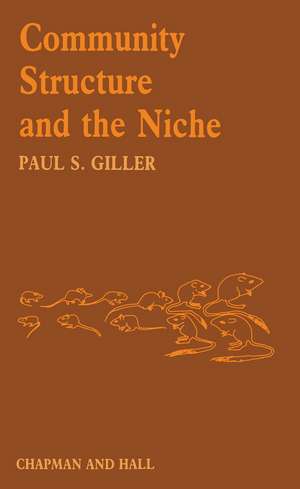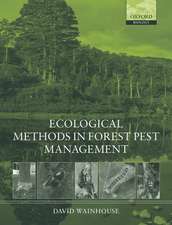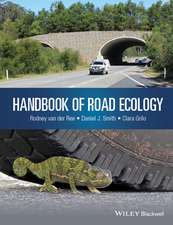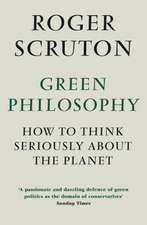Community Structure and the Niche
Editat de Paul Gilleren Limba Engleză Paperback – 6 sep 1984
Preț: 379.86 lei
Nou
Puncte Express: 570
Preț estimativ în valută:
72.69€ • 79.20$ • 61.25£
72.69€ • 79.20$ • 61.25£
Carte tipărită la comandă
Livrare economică 23 aprilie-07 mai
Preluare comenzi: 021 569.72.76
Specificații
ISBN-13: 9780412251108
ISBN-10: 0412251108
Pagini: 176
Ilustrații: X, 176 p.
Dimensiuni: 140 x 216 x 10 mm
Greutate: 0.22 kg
Editura: SPRINGER NETHERLANDS
Colecția Springer
Locul publicării:Dordrecht, Netherlands
ISBN-10: 0412251108
Pagini: 176
Ilustrații: X, 176 p.
Dimensiuni: 140 x 216 x 10 mm
Greutate: 0.22 kg
Editura: SPRINGER NETHERLANDS
Colecția Springer
Locul publicării:Dordrecht, Netherlands
Public țintă
ResearchCuprins
1 Introduction and definitions.- 1.1 The community.- 1.2 Community structure.- 1.3 Species diversity.- 1.4 Trends in species richness.- 1.5 The problem restated.- 2 Niche theory.- 2.1 Development of the niche concept.- 2.2 Niche width.- 2.3 Niche overlap.- 2.4 Diffuse competition.- 2.5 Niche dynamics.- 2.6 The niche — a property of the species or the community?.- 2.7 Summary.- 3 Competition and the niche; the effect on niche width.- 3.1 Theoretical effects of competition on the species niche.- 3.2 Criteria for the identification of competition in the field.- 3.3 The natural effects of intraspecific competition.- 3.4 The natural effects of interspecific competition.- 3.5 Conclusion.- 4 Competition and the niche; limiting similarity and differential niche overlap.- 4.1 Limiting similarity — the theoretical approach.- 4.2 The degree of limiting similarity.- 4.3 Niche dimensionality and differential overlap.- 4.4 Conclusion.- 5 Predation and species diversity.- 5.1 Theoretical studies.- 5.2 Plant—herbivore interactions.- 5.3 Predator—prey interactions.- 5.4 Reduced community diversity through predation.- 5.5 Conclusion.- 6 Competition and predation; complementarity of the hypotheses.- 6.1 The controversy.- 6.2 Interactions between competition and predation.- 6.3 Classification scheme.- 6.4 Conclusion.- 7 Saturation of communities.- 7.1 True islands.- 7.2 Habitat islands.- 7.3 Host plant islands.- 7.4 Continental saturation.- 7.5 Conclusion.- 8 Species diversity trends — theories and hypotheses.- 8.1 Time.- 8.2 Environmental conditions.- 8.3 Biotic factors.- 8.4 Explanations of species diversity patterns in two specific examples.- 8.5 Conclusion.- 9 The relative abundance of species.- 9.1 Fisher’s series.- 9.2 Lognormal distribution.- 9.3 ‘Broken stick’ orrandom niche boundary hypothesis.- 9.4 Niche pre-emption or geometric series hypothesis.- 9.5 Conclusion.- 10 Community structure: the patterns and rules.- 10.1 Community patterns.- 10.2 Communities: random or structured species associations.- 10.3 Community rules.- 10.4 Expressions of community structure.- 10.5 Stability/diversity relationships.- 10.6 Concluding remarks.- References.













